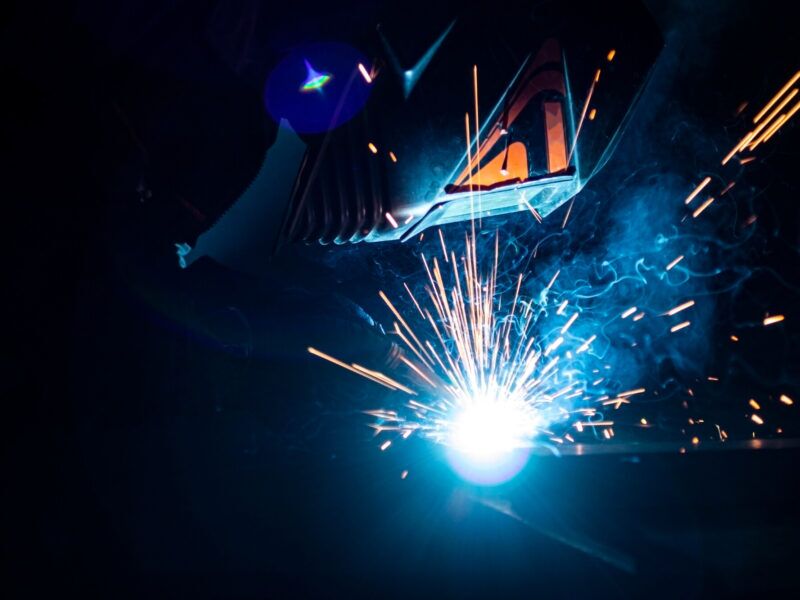Preventing Weld Undercut: Proven Methods Every Welder Should Know
Preventing Weld Undercut: Proven Methods Every Welder Should Know
Blog Article
A Comprehensive Guide to Identifying, Averting, and Mending Undercut Welding Problems in Your Welding Tasks
In the realm of welding, coming across undercut problems is an usual challenge that can compromise the structural honesty and overall quality of your welding jobs. Remain tuned as we explore the important elements of recognizing, protecting against, and fixing undercut welding troubles, providing you with valuable insights and approaches to raise your welding skills to the next degree.
Typical Sources Of Undercut Welding
Undercut welding, an usual issue in welding procedures, can be created by various variables that require to be meticulously identified and dealt with to make sure the stability of the weld joint. One of the main reasons of undercut welding is too much warm input. When the welding parameters, such as voltage, current, or take a trip speed, are not correctly set, a too much amount of heat can be created. This excess warmth results in the melting and subsequent removal of the base product along the sides of the weld joint, producing a groove called undercut.
An additional typical cause of undercut welding is inappropriate welding method. Identifying these origin triggers and implementing restorative measures is important in preventing and correcting undercut welding troubles in welding jobs.
Identifying Undercut in Welds

To recognize undercut properly, correct lights and magnifying devices are crucial to inspect the weld joint thoroughly. Using tools such as a welding gauge or a magnifying glass can help in discovering even the smallest undercut blemishes. Additionally, running a finger or a finger nail along the weld joint can sometimes reveal undercut, as the surface area might really feel unequal or have a dip where the undercut exists.
Safety Nets for Undercut
Having a deep understanding of the causes of undercut in welds permits for the application of effective preventative steps to keep weld high quality and honesty. These settings need to be optimized to protect against excessive warmth input, which can lead to undercut development.

Methods for Repairing Undercut

Increasing the welding existing or This Site lowering the travel rate can aid fill up in the undercut. In addition, changing the welding method from a press to a drag or vice versa can also assist minimize undercut.
One more strategy is to use a weaving movement while welding to make certain proper sidewall combination and fill in the undercut. By oscillating the welding arc back and forth within the weld joint, the welder can deposit much more filler product right into the undercut areas, successfully removing the defect.
Furthermore, grinding out the undercut and rewelding the joint can be a feasible remedy for check this more serious undercut problems - Preventing weld undercut. This procedure involves removing the undercut section, preparing the base steel, and after that rewelding the joint with proper welding parameters and methods to avoid undercut from reoccurring

Professional Tips for Preventing Undercut
Using correct welding techniques and preserving control over vital welding parameters are vital strategies for welders aiming to stop undercut in their weld joints. In addition, selecting the suitable welding procedure and filler steel for the specific application can help avoid undercut. Keeping a regular traveling speed during the welding process is one more crucial tip to avoid undercut.
Final Thought
In verdict, recognizing, avoiding, and taking care of undercut welding troubles in your welding tasks is critical for ensuring solid and long lasting welds. Preventing weld undercut. By recognizing the common root causes of undercut, having the ability to determine it in welds, carrying out safety nets, and utilizing correct strategies for fixing undercut, you can avoid potential issues and create top quality welds. Following expert tips for avoiding undercut can aid you boost your welding abilities and create much better cause your projects
Undercut welding, an usual concern in welding processes, can be caused by various factors that require to be very carefully determined and dealt with to ensure the integrity of the weld joint. In addition, running a finger or a finger nail along the weld joint can in some cases reveal undercut, as the surface area might feel irregular or have a dip where the undercut exists.
Using proper welding methods and maintaining control over vital welding criteria are important techniques for welders intending to stop undercut in their weld joints.In final thought, identifying, protecting against, and taking care of undercut welding problems in your welding tasks is important for ensuring durable and solid welds. By understanding the typical causes of undercut, being able to determine it in welds, implementing preventative steps, and making use of appropriate strategies for repairing undercut, you can stay clear of potential concerns and create top notch welds.
Report this page